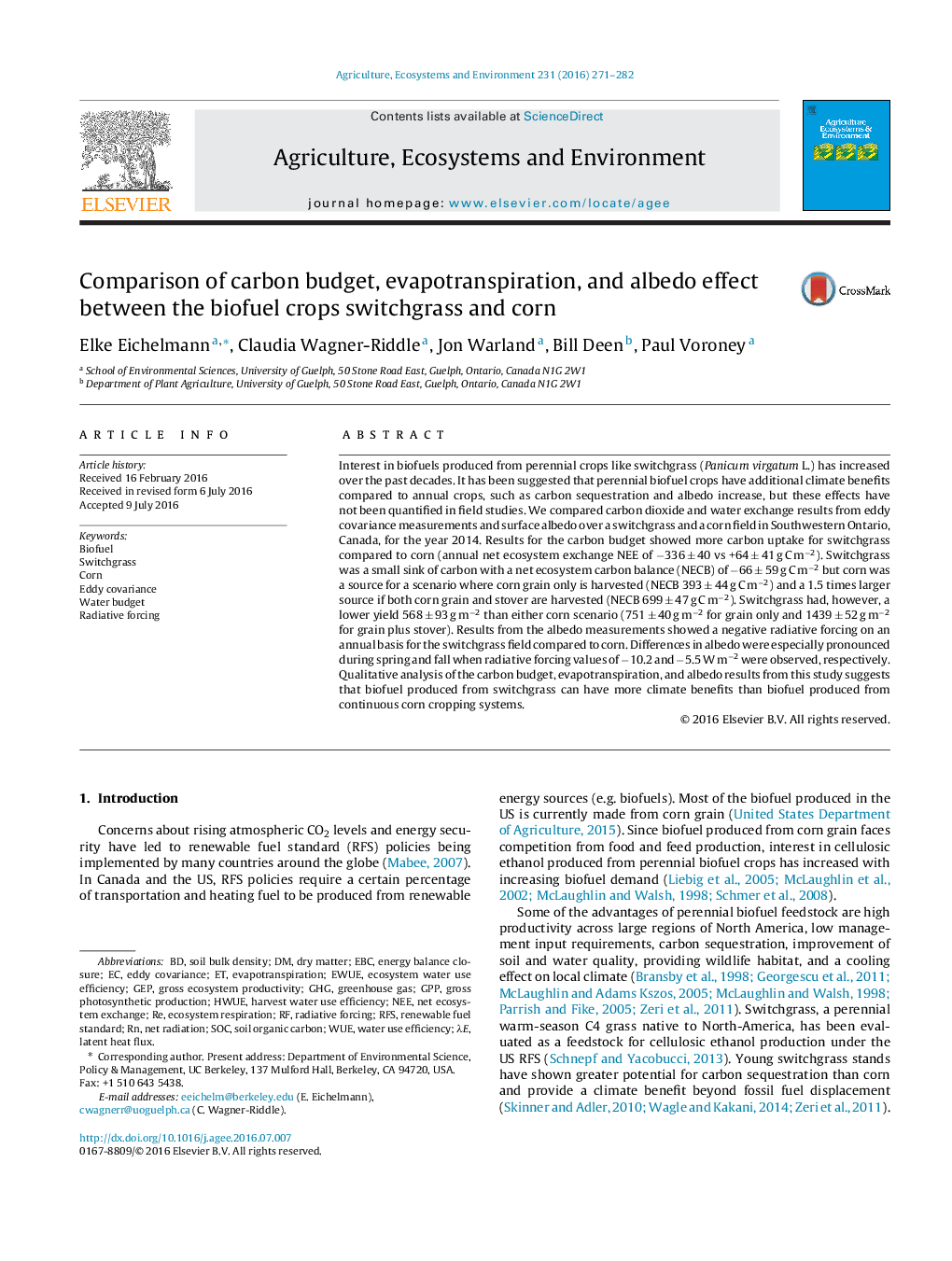| Article ID | Journal | Published Year | Pages | File Type |
|---|---|---|---|---|
| 8487363 | Agriculture, Ecosystems & Environment | 2016 | 12 Pages |
Abstract
Interest in biofuels produced from perennial crops like switchgrass (Panicum virgatum L.) has increased over the past decades. It has been suggested that perennial biofuel crops have additional climate benefits compared to annual crops, such as carbon sequestration and albedo increase, but these effects have not been quantified in field studies. We compared carbon dioxide and water exchange results from eddy covariance measurements and surface albedo over a switchgrass and a corn field in Southwestern Ontario, Canada, for the year 2014. Results for the carbon budget showed more carbon uptake for switchgrass compared to corn (annual net ecosystem exchange NEE of â336 ± 40 vs +64 ± 41 g C mâ2). Switchgrass was a small sink of carbon with a net ecosystem carbon balance (NECB) of â66 ± 59 g C mâ2 but corn was a source for a scenario where corn grain only is harvested (NECB 393 ± 44 g C mâ2) and a 1.5 times larger source if both corn grain and stover are harvested (NECB 699 ± 47 g C mâ2). Switchgrass had, however, a lower yield 568 ± 93 g mâ2 than either corn scenario (751 ± 40 g mâ2 for grain only and 1439 ± 52 g mâ2 for grain plus stover). Results from the albedo measurements showed a negative radiative forcing on an annual basis for the switchgrass field compared to corn. Differences in albedo were especially pronounced during spring and fall when radiative forcing values of â10.2 and â5.5 W mâ2 were observed, respectively. Qualitative analysis of the carbon budget, evapotranspiration, and albedo results from this study suggests that biofuel produced from switchgrass can have more climate benefits than biofuel produced from continuous corn cropping systems.
Keywords
Ecosystem water use efficiencyGEPGHGSwitchgrassEBCWUEGPPRFSRenewable Fuel StandardRadiative forcingWater use efficiencygross ecosystem productivityWater budgetNet radiationNet ecosystem exchangeEvapotranspirationEnergy balance closureEcosystem respirationCornBiofuelSOCLatent heat fluxdry matterNEESoil bulk densitySoil organic carbonEddy covarianceGreenhouse gas
Related Topics
Life Sciences
Agricultural and Biological Sciences
Agronomy and Crop Science
Authors
Elke Eichelmann, Claudia Wagner-Riddle, Jon Warland, Bill Deen, Paul Voroney,
